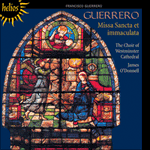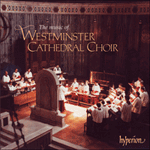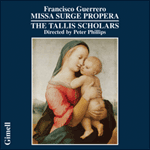
Welcome to Hyperion Records, an independent British classical label devoted to presenting high-quality recordings of music of all styles and from all periods from the twelfth century to the twenty-first.
Hyperion offers both CDs, and downloads in a number of formats. The site is also available in several languages.
Please use the dropdown buttons to set your preferred options, or use the checkbox to accept the defaults.

from notes by Peter Phillips © 2005
extrait des notes rédigées par Peter Phillips © 2005
Français: Gimell
aus dem Begleittext von Peter Phillips © 2005
Deutsch: Viola Scheffel
 Guerrero: Missa Sancta et immaculata & other sacred music Guerrero: Missa Sancta et immaculata & other sacred music‘Exhilarating, full of variety, and spiritually uplifting. Westminster Cathedral Choir are on their very best form, incisive and thrilling. Very highl ... ‘The music and performances on this disc defy superlatives—just go out and buy it!’ (Early Music Today)» More |
 The music of Westminster Cathedral Choir The music of Westminster Cathedral Choir'A wonderful programme. Westminster Cathedral Choir excite, enthral and electrify under both James O'Donnell and his predecessor David Hill. It would make an ideal gift for any lover of the tradition' (Cathedral Music) 'Bargain of the month' ( ... » More |
 Guerrero: Missa Surge propera & motets Guerrero: Missa Surge propera & motetsSACD. Known in his lifetime as 'El cantor de Maria', Guerrero was second only to Victoria in Spanish renaissance music. His Marian motets are celebrated as some of the most beautiful compositions of the period: we include five of the best, includi ...» More |

